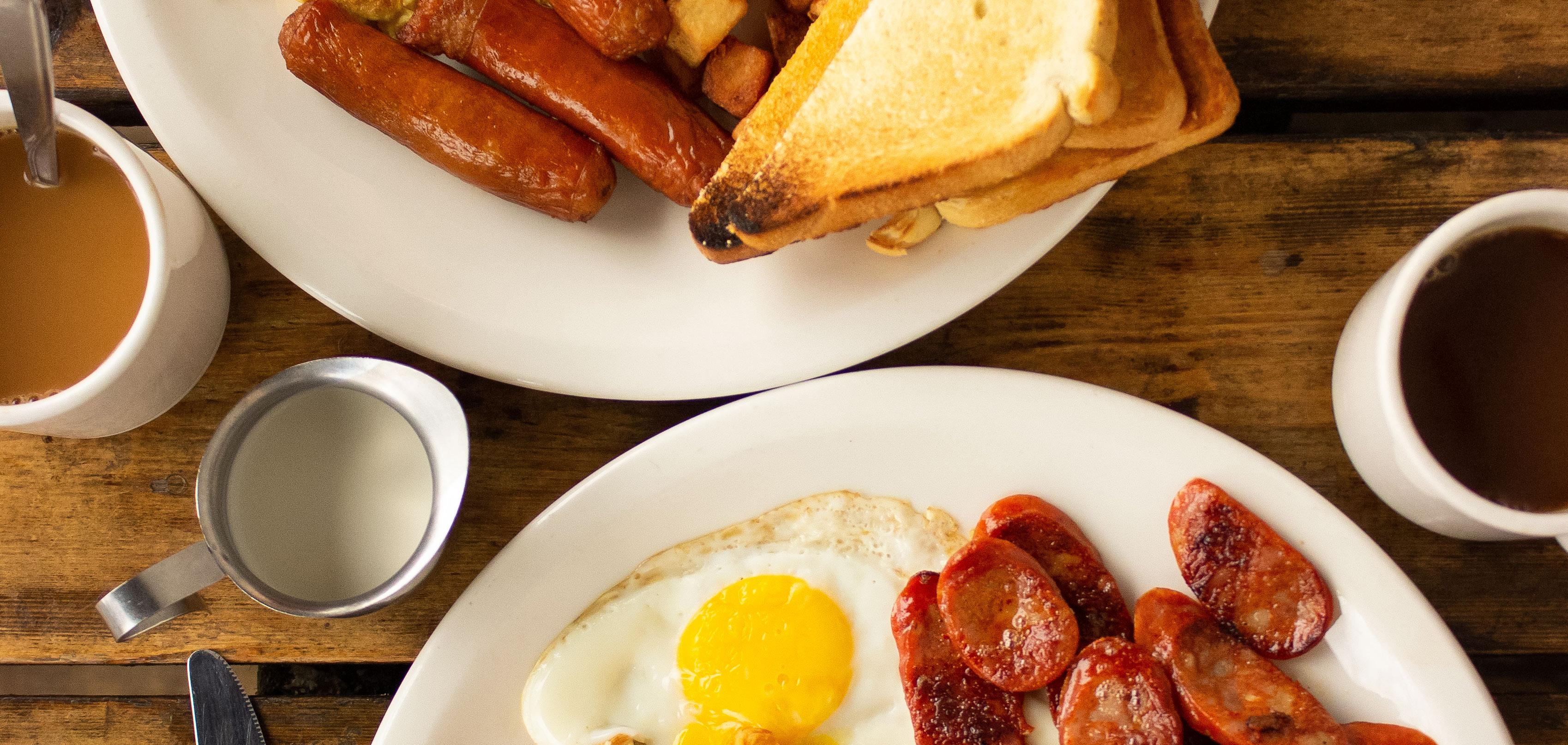















ALL FOR NAUGHT

If students are interested in securing cyclists’ and walkers’ safety on Burnaby Mountain, it starts with petitions, emails, and letters to the school.

Telling Canadians to drink less without addressing social pressures that lead to excessive consumption is not the most effective strategy.




차례 (Charye)
Charye is “a memorial service for one’s ancestors,” where a ritual table is set with special dishes, ancestral tablets, and incense. Your family members would gather at your family shrine or one of your relative’s homes and all take part in the set-up of the ritual table. You then deep bow to your ancestors, who are believed to be present, and eat the food you prepared with your family members. The service is held predominantly on Seollal and Chuseok (Korean Thanksgiving), but resembles a more common practice called Gijesa: “the annual memorial service held on the date of an ancestor’s death.” Nowadays, Gijesa is usually prepared for a person you were close to who has passed away and not necessarily just your ancestors, but for very close friends and partners, too. Charye is more of a general memorial service to your late ancestors, rather than a specific individual. Both traditions are ways to honour and show gratitude to your late ancestors. My family hasn’t taken part in charye as we aren’t in Korea with our extended family, but we did hold Gijesa for my grandfather for several years. My father once explained to me that the foods laid out are offered to the ancestor to eat. Therefore, our table is blessed with their love and presence when we finish our greetings and eat the food ourselves. This importance placed on sharing a meal with loved ones, or showing we care by making sure our loved ones are fed, is an ideology that is carried in modern, everyday Korean society.
세배 (Sebae)
Sebae is to honour your ancestors who are alive! Sebae is the name of the specific traditional bow you give to your family members who are generationally older than you. I have fond memories of putting on my hanbok as a child and frolicking through the countryside between my elder relatives’ homes. You would be invited inside, and there you would perform the bow and tell them the Seollal greeting. In response, your elders respond with the same greeting or something more specific, like “May you be healthy and happy this year,” or “May your career kickstart this year,” or the dreaded: “May you get married this year.” They also are likely to give you an envelope of money, 세뱃돈 (sebaetdon), in return to symbolize their well wishes for your luck and prosperity.
Traditional Foods
According to the traditional system, Seollal meant it was everybody’s birthday, and the moment you turn a year older would be marked by eating 떡국 (tteokguk) on this day: a rice cake soup symbolizing purity. Thanks to a new law, Koreans will be reverting to their international age starting June 2023, making their documented age bump down one or two years. We, of course, had tteokguk, and tend to have it multiple times a year as it is one of my dad’s favourite foods and is simple to make.
My mom spent most of the food preparation time making various kinds of 전 (jeon), which are basically various sliced vegetables, meats, and seafood dipped in flour and egg, and then fried in a pan. I’ve seen Koreans use this method to make jeon out of basically any ingredient to a comical extent, and it’s a delicious way to make sure those sad root vegetables sitting in your fridge get consumed. Some jeon are prepared slightly differently and these are shaped like round
flat pancakes, filled with kimchi, green onion, or seafood. My mom made eggplant jeon, zucchini jeon, wanjajeon, and daegujeon. The latter two are more time consuming to make as wanjajeon needs to be individually handshaped into little circular disks first, and daegujeon requires proper fish preparation methods. As my mom cooked, she reminisced over memories of making these foods in a much grander extent, growing up in the ’80s. All the women in the family gathered to make everything, including the dumpling wrappers and sikke, from scratch, while the men of the family secured the meats and seafood and entertained the children. She said celebrating Seollal again lifted these wandering memories to the surface. Jeon goes super well with a Korean rice-based liquor called makgeolli or a non-alcoholic sweet rice beverage called Shike.
One of the main activities we partook in on Seollal was to make mandu (Korean dumplings) together, as more hands make lighter work. Each mandu is individually assembled by hand, placed in a steamer in batches, and consumed, frozen, or pan-fried. We made over a hundred mandu this year to circulate around to our friends’ homes — I find the shaping of the mandu a tedious but therapeutic experience. I was dismayed to find my partner making beautiful mandu right away, whereas mine looked like garbage no matter how many times I was taught.
There are many other traditional foods that can be prepared and eaten on Seollal like japchae (glass noodle stir fry), sweet tteok (sweet ricecakes), or various fruits including Asian pears, but these are the main big three our household focused on this year.
Traditional Games
At various points throughout the day, we sat down and played 화투 Hwatu and 윳놀이 (yut-nori). One aspect of Seollal I really love is that these games can keep you entertained for hours, and are activities that help you disconnect from screens and connect with your family members. Hwatu, also referred to as Godori, Go-Stop, or in translation: “War of the Flowers,” is a card game based on the Japanese Hanafuda. The game was brought to Korea during the Japanese occupation during the 1900s. Although there is painful colonial history associated with that time and Japan, this game is still widely popular in Korea. Perhaps too widely popular, as it is often a game associated with gambling. The game is too complicated to explain here but basically it’s like the poker of go-fish, and is almost guaranteed to bring out your competitiveness.
Yut-nori is a traditional Korean folk game that is much more accessible and playful than Hwatu. Whereas Hwatu is mainly played by adults with its complicated rules, yut-nori can be played and enjoyed by everyone! It involves tossing four, marked, wooden game sticks instead of dice to see how many moves you get to make on the board. You are split up in two teams, and the goal is to get all your pieces across the board faster than your opponent. If Hwatu is the poker of go-fish, yut-nori is like the games chess and Sorry! combined. My father always said yut-nori is the “game representative of life,” because depending on strokes of luck, you can turn the game in your favour. If you’re unlucky enough, you can also get completely fucked by your opponent in one turn when you were on the brink of winning. When playing yut-nori, you can’t help but laugh, especially when these huge shifts happen, and my father always said that applies to life too. When things go horribly wrong, let’s just laugh, because you never know when the tides will turn just as dramatically in your favour.


One of my favourite parts of being on [the] national SAAC has been the connections that I’ve made.


1.) True or false: The Tokyo 2020 Men’s High Jump competition had two winners take home gold medals instead of one.
Answer: True. Qatar’s Mutaz Essa Barshim and Italy’s Gianmarco Tamberi both took home gold medals after completing matching jumps of 2.37 m.
2.) What do the Olympic rings symbolize?
a. A rainbow
b. They’re just colourful circles

c. Unity, peace, and the never-ending spirit of competition
d. Five continents
Answer: d. Five continents. No, you’re not the only one who’s scratching their head. While there are now seven continents, the five rings symbolize what was considered the five continents in 1912: Africa, Asia, Europe, Oceania, and the Americas.
3.) Which Olympic games were the first to ensure women could compete in all sports, and had a woman competitor represented by each nation?
a. 1956
b. 2012
c. 1998
d. 2004
Answer: b. 2012. Only 11 years ago!
4.) What happened to Olympians who broke rules in ancient Greece?
a. They had to undertake corporal punishment
b. They were exiled from their homes
c. Bending the rules was encouraged and demonstrated intelligence
d. There were no rules to break
Answer: a. Corporal punishment. The ancient Greeks appointed “Alytes,” who were in charge of catching cheating athletes and giving out their punishments. Fines were even given out to competitors who withdrew from competitions.
5.) True or false: During the 2000 Olympics in Australia, 450,000 condoms were ordered for athletes.
Answer: False. 450,000 condoms is actually the number ordered by Brazilian officials for the 2016 Olympics in Rio de Janeiro. In comparison, the Australians ordered a tame 90,000 condoms 16 years earlier.
6.) How much water is there in an Olympic-sized swimming pool? (Measured in bathtubs).
a. 50,000 bathtubs

b. 8,200 bathtubs
c. 500 bathtubs
d. 15,547 bathtubs
Answer: b. 8,200 bathtubs. Where would you even put 8,200 bathtubs?!
7.) True or false: McDonald’s ran out of hamburger buns during the 1984 LA Olympics after offering free meals each time a US athlete made the podium.
Answer: True. This is probably the single most likely reason why the price of a McDonald’s Big Mac has increased 40% over the years.
8.) Which of these items was adopted as a marketing scheme after being introduced during the 1996 Olympics in Atlanta, Georgia?
a. Mascots
b. Slogans
c. Inflatables
d. Spokespeople
Answer: c. Inflatables. Yes, the same inflatables at car dealerships first appeared at the 1996 Olympics, and were inspired by the “loose” dancing style of the inventors’ country, Trinidad and Tobago.
HOME GAMES
THUR FEB 9
SAT FEB 11
SAT FEB 11
MEN’S BASKETBALL vs Alaska Anchorage at 7:00 p.m. (West Gym)
» 0–1 against Alaska Anchorage this season
MEN’S BASKETBALL vs Alaska Fairbanks at 7:00 p.m. (West Gym)
» Senior Night
» Last home game of the season
HOCKEY vs Okanagan Lakers at 3:45 p.m. (Bill Copeland Sports Centre)
» Won last game 7–0 against the Logan Lake Miners
» Forward Nick Wicks leads the team with 35 points (13G, 22A) in 14 games
AWAY GAMES
THUR FEB 9
WOMEN’S BASKETBALL vs Saint Martin’s (Wash.) at 5:15 p.m.
» 0–1 against Saint Martin’s this season
» SFU forward Jessica Wisotzki led all shooters with 19 points
TRACK AND FIELD at the David Hemery Valentine Invitational
FEB
SAT FEB 11
SAT FEB 11
» Second meet this season at Boston University
TRACK AND FIELD at Husky Invitational (all day)
» Third trip to the University of Washington this season
WOMEN’S BASKETBALL vs Western Oregon at (2:00 p.m.)
» Won 70–44 against Western Oregon earlier this season
» Last meet ahead of the NCAA Division II Championships FEB 11–12
SWIMMING at UVIC for the BC Tri-meet (all day)
SUN FEB 12
WOMEN’S WRESTLING at Menlo Open (all day)
» Final competition before championships











